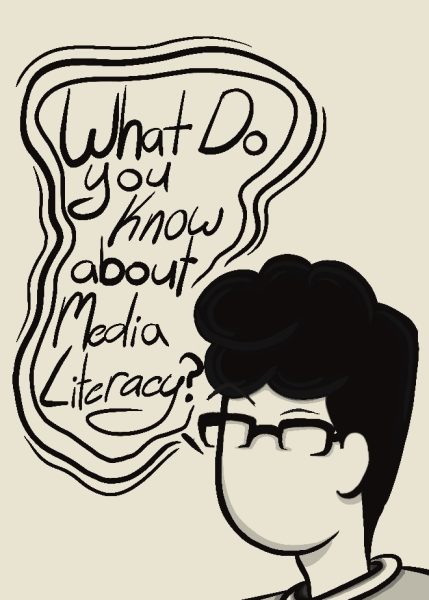“Marvel Studios” may be hurling toward its own undoing
Just three years ago, Marvel Studios released “Avengers: Endgame,” a global phenomenon that, for a short period, was the number one highest grossing film of all time and still holds its place as the second highest grosser of all time (after Avatar re-surpassed it).
Since then, we have gone through a global pandemic, during which Marvel Studios took a year-long “break” from releasing content. In January of 2021, it returned with its first ever TV series, premiering on Disney Plus, “WandaVision.”
Since then, Marvel Studios has released six films, two animated series, and seven live-action series in less than two years, most recently with “She-Hulk: Attorney at Law.” Just for comparison, prior to “Endgame,” in two years the studio would average six film releases every two years, which is a lot for movie-goers to handle. But by the end of 2022, Marvel will have released a total of sixteen projects between its series and films, nearly triple its previous release schedule. But that’s not what is most concerning.
Advertisement
Recently Marvel has announced its entire release slate up to 2025 (excluding a few projects kept under wraps). This will culminate with not one, but two new “Avengers” films released in the same year.
President and mastermind of Marvel Studios, Kevin Feige, also revealed that this era of Marvel releases, from 2021 to 2025, will be titled the “Multiverse Saga.” This Saga, in total, will encompass 37 live-action projects (not including various animated series). Between the television series and films, all of them are being considered integral to the overarching storyline being told within the Marvel Cinematic Universe.
For another comparison, the original “Infinity Saga” of the MCU started with “Iron Man” in 2008 and ended with “Endgame” in 2019. It was composed of 23 films, over an eleven-year period, which, even in its own right, was unprecedented. But now the number of projects being released is nearly doubled and in less than half the time.
Even the franchise’s most die-hard fans have expressed a certain level of concern. With it becoming increasingly difficult to keep up with the various shows and movies, which at the current rate, are releasing nearly every month, with all these still being considered “necessary viewing” for the franchise.
The aspect of quality-control has also been of concern for a lot of viewers. With the Marvel pipeline churning out so much content in such a short amount of time, it’s likely nearly impossible for them all to maintain a consistent level of quality.
The recent release of “Thor: Love and Thunder” has been a pivotal moment for moviegoers at large, in their perception of the franchise and the genre. For the first time in years, the consensus around a Marvel film has been largely negative. With “Thor” being one of the franchises longest lasting and most beloved characters, it’s even more shocking.
Many fans have stated their disappointment with the film’s mediocrity, which then opened a larger conversation about the current state of the franchise, with many calling out the relatively inconsistent quality of the Disney Plus shows as well.
Advertisement*
With the franchise’s recent projects disappointing audiences, it becomes hard to be confident in Marvel’s larger plans going forward. While it doesn’t seem like the company’s profits are taking any hit currently, it begs the consideration of the sustainability of Marvel’s current business practices.
There has also been a magnifying glass positioned on Marvel’s relationship with CGI FX studios. Many firsthand accounts from visual effects artists have come out stating that the working conditions with Marvel are simply unacceptable. Marvel will often outsource to third- party effects studios for the CGI in its films/shows.
Many workers have stated the turnaround time to finish these effects is extremely strenuous, with the studio demanding last minute changes consistently, as well as those employees having to crunch in long workdays to meet their deadline.
Statements were made on social media from the artists, saying Marvel is the “worst VFX management out there.” Some effects studios have even stated they actively avoid working with the studio following previous negative experiences.
With the amount of CGI present in every Marvel project and the number of total projects in a short period of time, one must assume it can’t be possible for franchise products to be completed with a consistent level of quality, or ethical work practices.
Each Marvel show often costs around $150 million to produce, with their films typically doubling that budget. This requires that each project make a considerable amount of money to even earn back its budget, let alone turn a profit.
The superhero genre is consistently the most expensive, and the expectation of each one to gross at least half a billion dollars is becoming more and more unreasonable. Even outside of Marvel, there are no shortage of competitors trying their own hand. With all the emphasis placed on these films, it’s easy for smaller films to be pushed out and have their lunch eaten by these box office titans.
All these facts come together to paint a picture of the current state of the film industry at large, even outside of superhero films. With the industry having shifted towards these types of films, out of sheer profitability, there is a real sense of burnout among audiences.
Many find it impossible to keep up with the timeline of even just Marvel films, let alone the multiple other separate franchises. And when it has become a gamble whether the projects will even be enjoyable, it’s hard to look at Kevin Feige’s massive slate of releases for the next three years with excitement, rather than anxiety.
Staff reporter Zaden Dennis can be reached at zdennis@dailyegyptian.com and you can find his other reviews at letterboxd.com/Zadenator. To stay up to date with all your Southern Illinois news follow the Daily Egyptian on Facebook and Twitter.
Advertisement















Ian • Sep 5, 2022 at 5:50 pm
I absolutely agree. What once started as a new and fun way to create a franchise has turned into a content machine that treats the audience as prisoners to the universe they once loved. Great article!